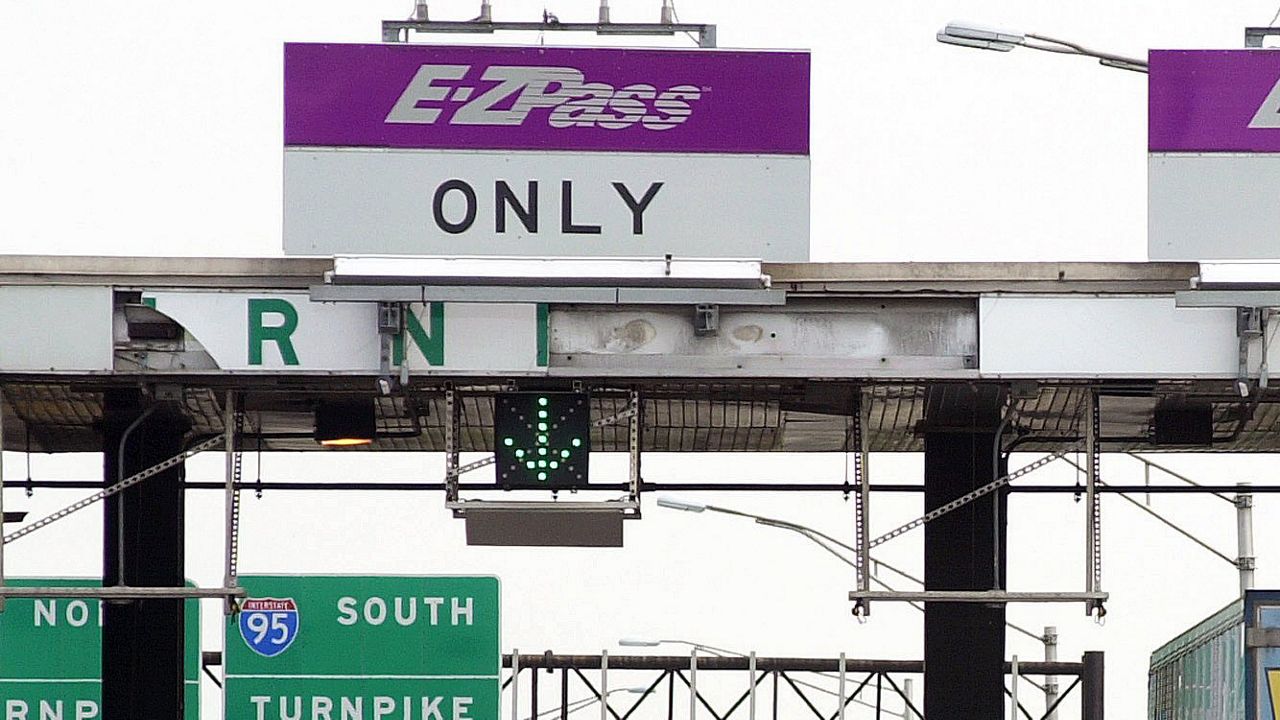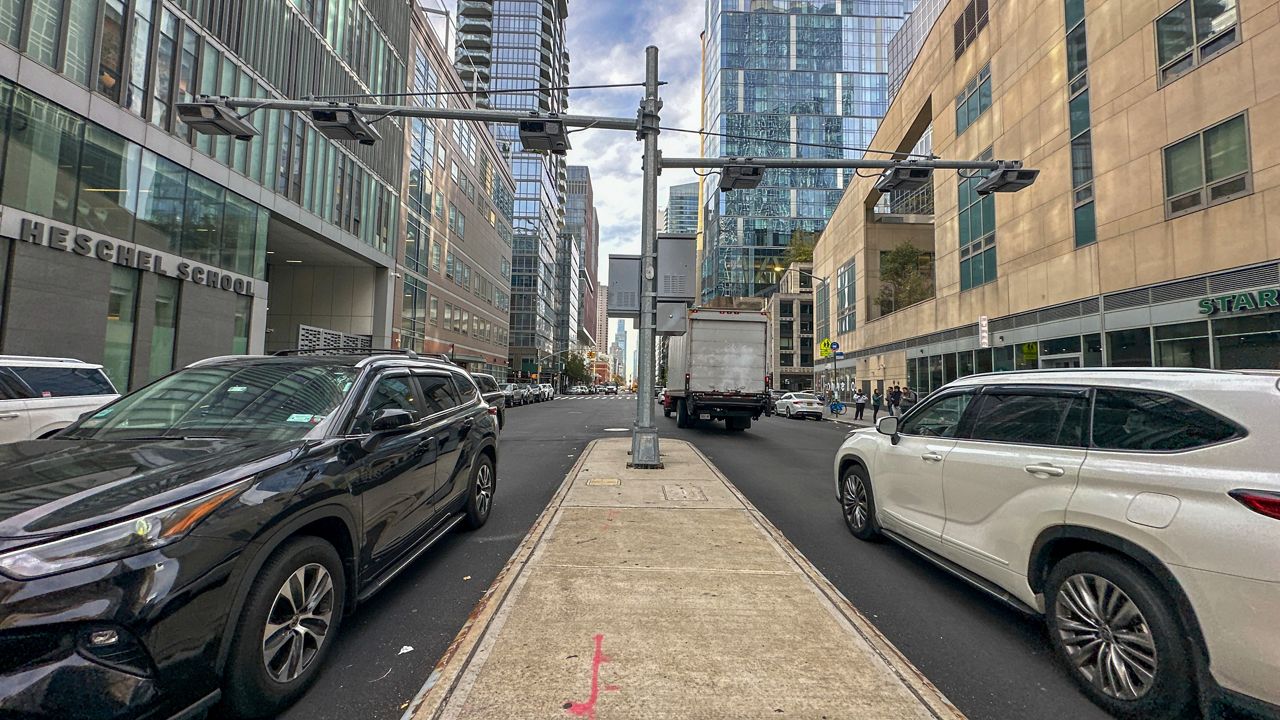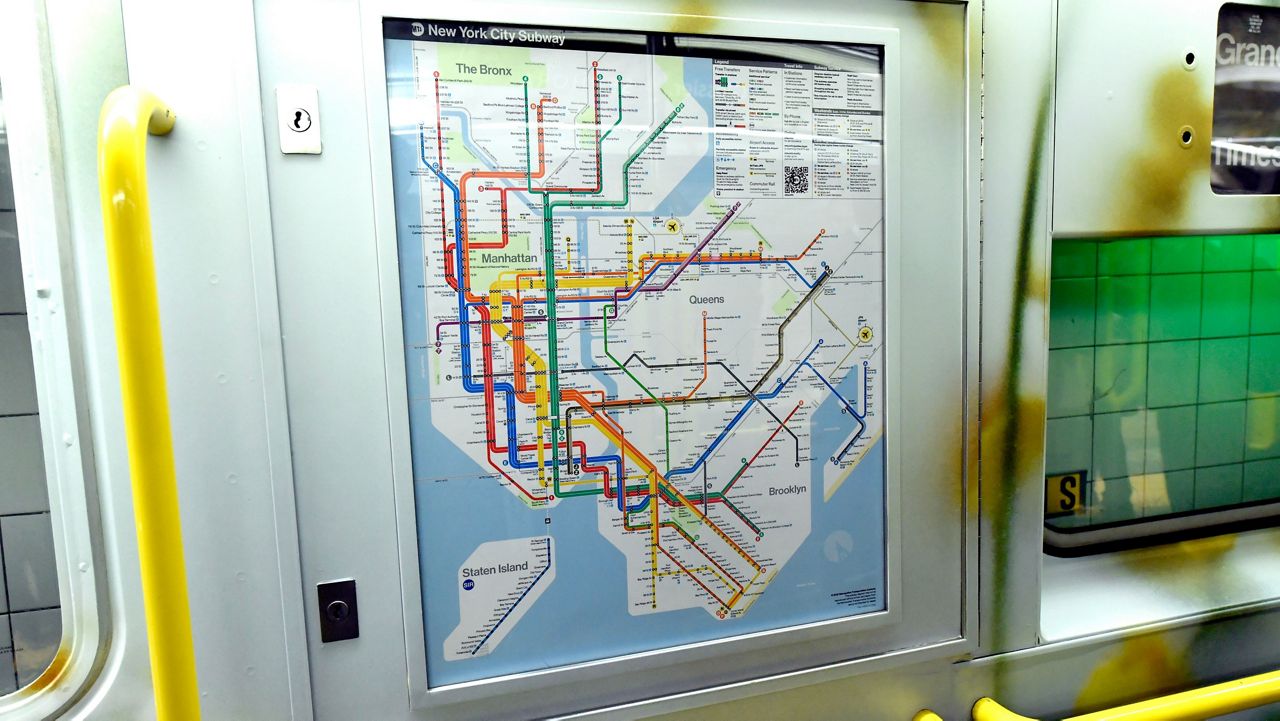Starting May 7, 2025, New Yorkers and other U.S. travelers will need what’s known as a REAL ID to board a domestic flight, unless they bring a valid passport with them.
The new rule was set to take effect in May 2023, but the Department of Homeland Security in 2022 extended the enforcement deadline by two years, citing pandemic-related delays.
Before you get your REAL ID, here’s everything you need to know about it.
What is a REAL ID, and how is it different from a standard ID?
A REAL ID is a federally compliant, Department of Motor Vehicles-issued driver’s license, learner permit or non-driver ID that requires several different documents to obtain.
In New York state, the top right corner of a REAL ID card is marked with a clear star in a bolded black circle.
New federal rules will require travelers who are 18 years or older to present a REAL ID to board a domestic flight within the U.S. without a passport. A REAL ID will also be required to enter nuclear power plants and some federal facilities, DHS says.
New Yorkers will not be able to use a standard ID — which doesn’t have a star marking — to board a domestic flight without a passport.
Children under 18 will still not need to provide identification if they are traveling with a companion domestically — though their companion will need ID, according to DHS.
What is the history behind the REAL ID?
The Real ID Act, passed by Congress in 2005 and signed into law by then-President George W. Bush, was intended to go into effect in 2008, but was delayed numerous times, including several times due to the pandemic.
The law was enacted in the wake of the September 11, 2001, terrorist attacks, and was a recommendation of the 9/11 Commission.
The New York state Department of Motor Vehicles says the act “establishes minimum security standards for state-issued driver licenses, permits, and ID cards,” adding that it also “prohibits federal agencies, like the Transportation Security Administration (TSA), from accepting cards for official purposes from states that do not meet these standards.”
What is the difference between a REAL ID and an Enhanced ID?
In New York, state residents who are also U.S. citizens can apply for an “Enhanced” license, permit or non-driver ID instead of a REAL ID.
An Enhanced ID allows its holder to do everything a REAL ID does — including board a domestic flight without a passport — but it also allows them to return to the U.S. by land or sea from Canada, Mexico and some Caribbean countries without a passport, which a REAL ID does not.
An Enhanced ID can’t be used to fly between the U.S. and Canada, Mexico and countries in the Caribbean, the New York state DMV notes.
In New York state, Enhanced IDs have an American flag marking on their top or bottom right corner.
The New York state DMV requires a $30 fee for an enhanced ID, on top of normal transaction fees. There is no additional fee for a REAL ID, though normal transaction fees apply.
How much does it cost to get a REAL ID?
According to the New York state DMV, you’ll still need to pay normal transaction fees for a REAL ID, but you won’t have to pay any additional fees.
The DMV does charge a $30 fee for an Enhanced ID.
Where can I get a REAL ID card?
New Yorkers looking to get a REAL ID card will need to visit a DMV office in person, fill out the application (which can also be found online), present the necessary documents and have their photo taken.
What documents do I need to get a REAL ID card?
To apply for a REAL ID, you will need to provide the DMV with several different documents, including two proofs of New York state residency and proof of your full, legal name.
The DMV accepts multiple different proofs of residency, including a current New York state license, permit or non-driver ID card, a recent bank statement, or a recent pay stub with your current New York state address. Applicants can’t submit documents that list a P.O. Box as an address or were issued more than a year before your visit to the DMV.
To provide proof of full, legal name, meanwhile, applicants can’t submit documents that have a nickname on them.
“If a nickname, abbreviated name, or confirmation name appears on any of your proof documents, additional proof of full, legal name, or proof of a court-ordered name change, must be shown,” the state DMV says. “If your name has changed once or multiple times due to marriage or divorce, for example, proof of each change, such as a marriage certificate or divorce decree, must be provided to show the connection.”
In an interview with NY1's Shannan Ferry, New York state DMV deputy commissioner Lisa Koumjian advised New Yorkers to prepare for their appointments ahead of time.
To find out which documents you’ll need — based on which ones you have and what type of license or permit you’re applying for — click through to the New York state DMV’s step-by-step guide.
“It’ll ask you different questions like, do you have a birth certificate? Have you been married? Do you have your marriage license?” Koumjian explained. “And at the end of that self-guided tour, it’ll have a checklist for you, so you know exactly what you need to bring into the office.”
If you want to make sure you have all the documents you need before you head to the DMV, the state DMV offers a pre-screening process online. The agency will review your application and contact you with instructions before you schedule your in-person DMV visit.
The DMV has staff “standing by” to review documents, Koumjian said.
“And that way you know if everything's accurate, if it’s in check, if you have everything you need. Otherwise, they’ll message you back through email and say, hey, you’re missing this, or these things don’t match up, and you need to make some changes,” she said. “So we highly recommend folks go online.”
How can I avoid long lines at the DMV?
Koumjian said the best way to avoid long lines is to make a reservation online.
"That’s the easiest way to get in and out,” she said. “Folks who have a reservation can usually get in and out of the office in about 30 minutes.”
That being said, Koumjian did note that “demand is very high right now.”
“So you may wait a couple weeks before you can get an available reservation, but we are releasing new appointment times throughout the day. Every single day, we’re adding more,” she said. “We’ve significantly enhanced the number of reservation slots that we have for REAL ID and [Enhanced ID] appointments, so keep checking back.”
“Even if you log on in the morning, you don’t see anything available, check later in the day,” she added. “We know a lot of New Yorkers work different hours, and they’re not always able to get on first thing in the morning, so [we’re] trying to make it fair for everybody.”
To accommodate demand, New York state’s DMV is opening select offices in New York City and on Long Island on Saturday mornings between 8 a.m. and 1 p.m. from April 5 to June 28 for REAL ID and Enhanced ID appointments.
The DMV’s Bronx, Harlem, Midtown, Richmond, Brooklyn Atlantic, Coney Island, College Point, Yonkers, Garden City and Medford district offices will all be offering the new Saturday hours.
The DMV will also expand its Thursday hours at offices across the five boroughs and in Westchester, Rockland, Nassau and Suffolk counties, operating from 7:30 a.m. to 6:30 p.m.
What happens if I show up to board a domestic flight without a REAL ID?
Starting May 7, 2025, domestic travelers ages 18 and up who don’t present a REAL ID or an Enhanced ID won’t be permitted through airport security checkpoints, unless they have a passport other form of “acceptable identification.”
A full list of accepted IDs can be found on the Transportation Security Administration’s website.
What happens if TSA doesn’t accept my Enhanced ID?
Because New York is one of just five states that offers an Enhanced ID option, not all TSA agents are familiar with the card, Koumjian said.
If a TSA agent says an Enhanced ID doesn’t qualify you to fly without a passport, Koumjian said you can show them the TSA’s online list of “acceptable IDs,” where the Enhanced ID is listed as an acceptable form of identification.
“We’re in constant communication with TSA about this to make sure not only are the agents properly trained, but folks who do have an Enhanced ID are informed as well, so they can help educate when they’re at the airport,” she said.
Can I use a REAL ID to travel to Mexico, Canada or other international sites?
No. Per DHS, REAL ID cards can’t be used for international travel, including crossing into Canada or Mexico. An Enhanced ID, however, can be used to travel to Canada or Mexico, and some Caribbean countries, via land and sea (but not via air travel).
Do I need a passport if I have a REAL ID?
If you’re traveling domestically, you won’t need a passport if you have a REAL ID. Only one of those two forms of identification is needed. But if you’re traveling internationally, you will need your passport.
Can I get REAL ID if I am a noncitizen?
In New York state, noncitizens are eligible for a standard ID, which is not the same as a REAL ID or an Enhanced ID.
Any noncitizen who can provide proof of lawful presence is eligible for a REAL ID, but only U.S. citizens can get an Enhanced ID, according to the state DMV.
Can I get a REAL ID if I am a Deferred Action for Childhood Arrivals (DACA) recipient?
DHS says the REAL ID Act “allows states to issue temporary (i.e., limited-term), REAL ID-compliant driver's licenses and ID cards to applicants who provide valid, documentary evidence that they have ‘approved deferred action status.’”
“Under the REAL ID regulation, applicants with approved deferred action who hold valid Employment Authorization Documents (EADs) and Social Security Numbers (SSNs) may qualify to receive temporary REAL ID driver's licenses and ID cards,” the DHS website says.
“Individuals with approved Deferred Action, valid EADs and valid SSNs may continue to hold temporary (limited-term) REAL IDs until their expiration,” it adds. “In any case, REAL ID compliant states may continue to issue noncompliant licenses and IDs to individuals with or without lawful status, including deferred action, as defined under the REAL ID Act.”









_PKG_DOT_BQE_Improvements_CG_131225588_368)